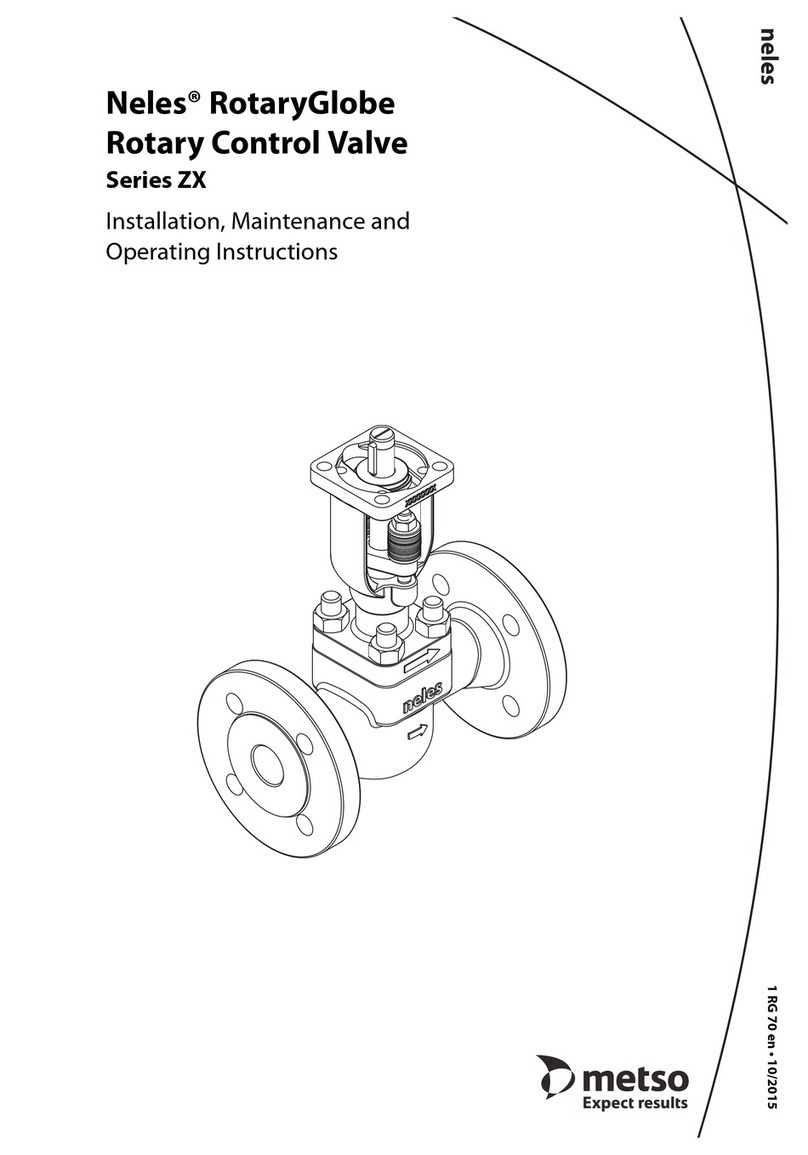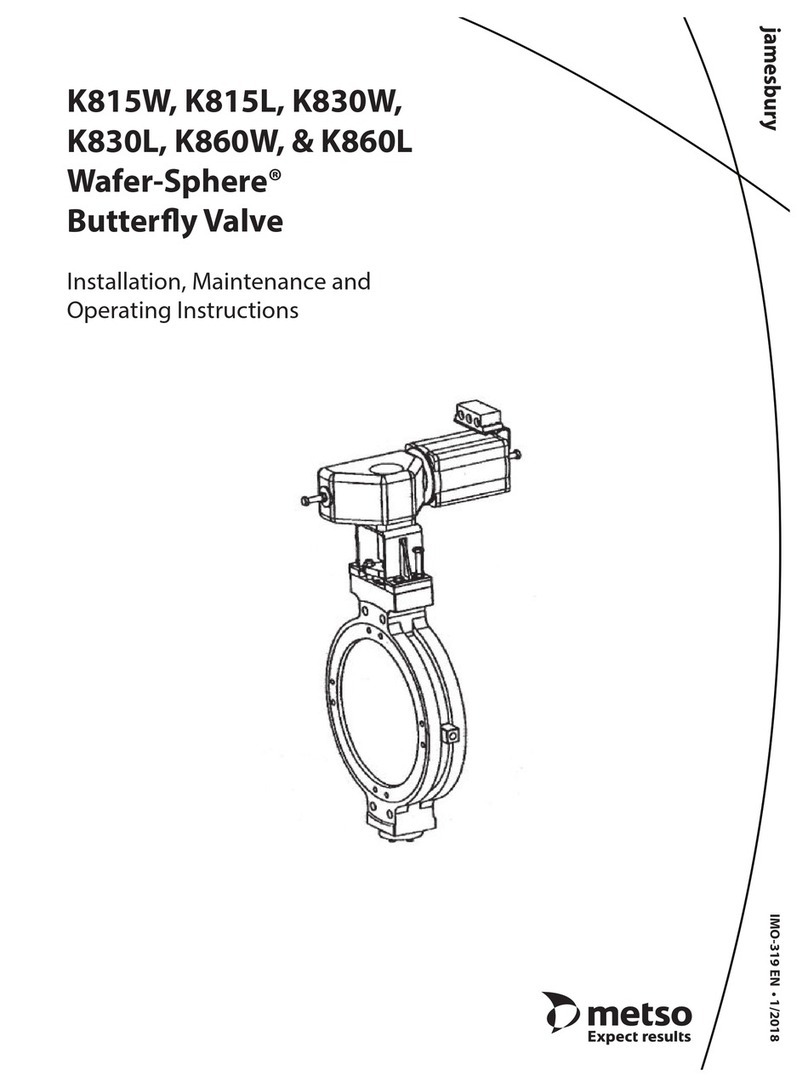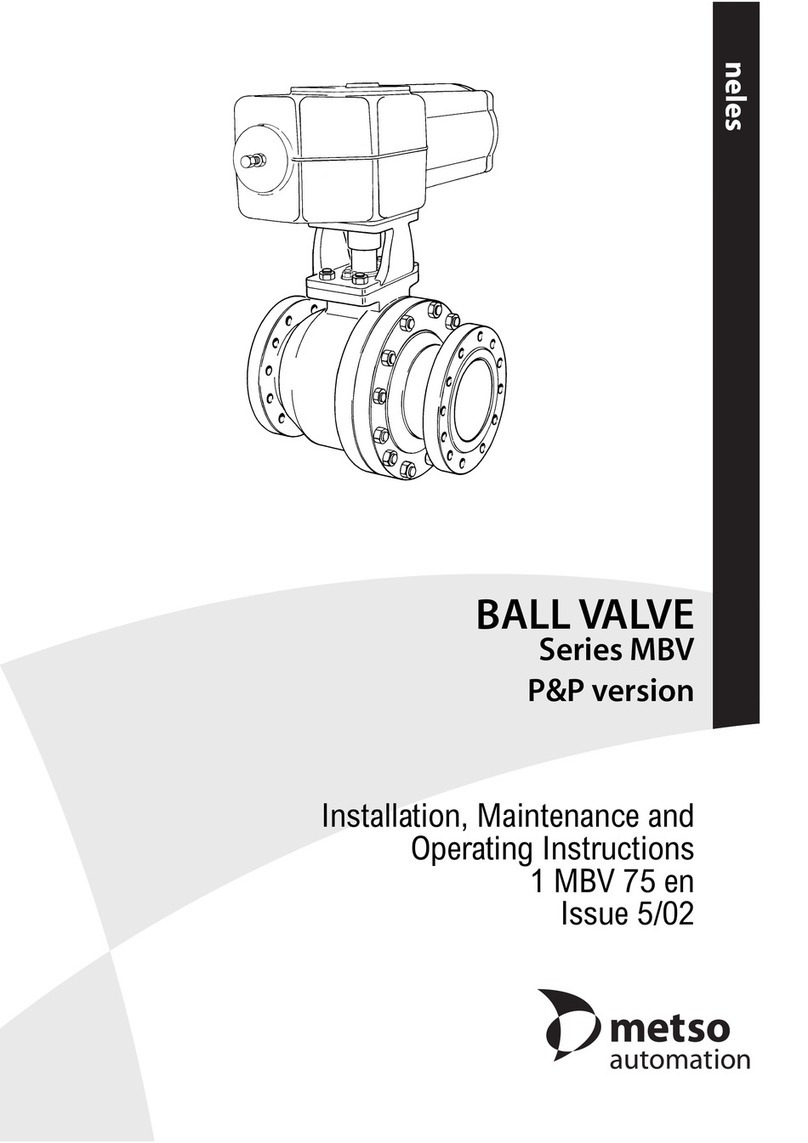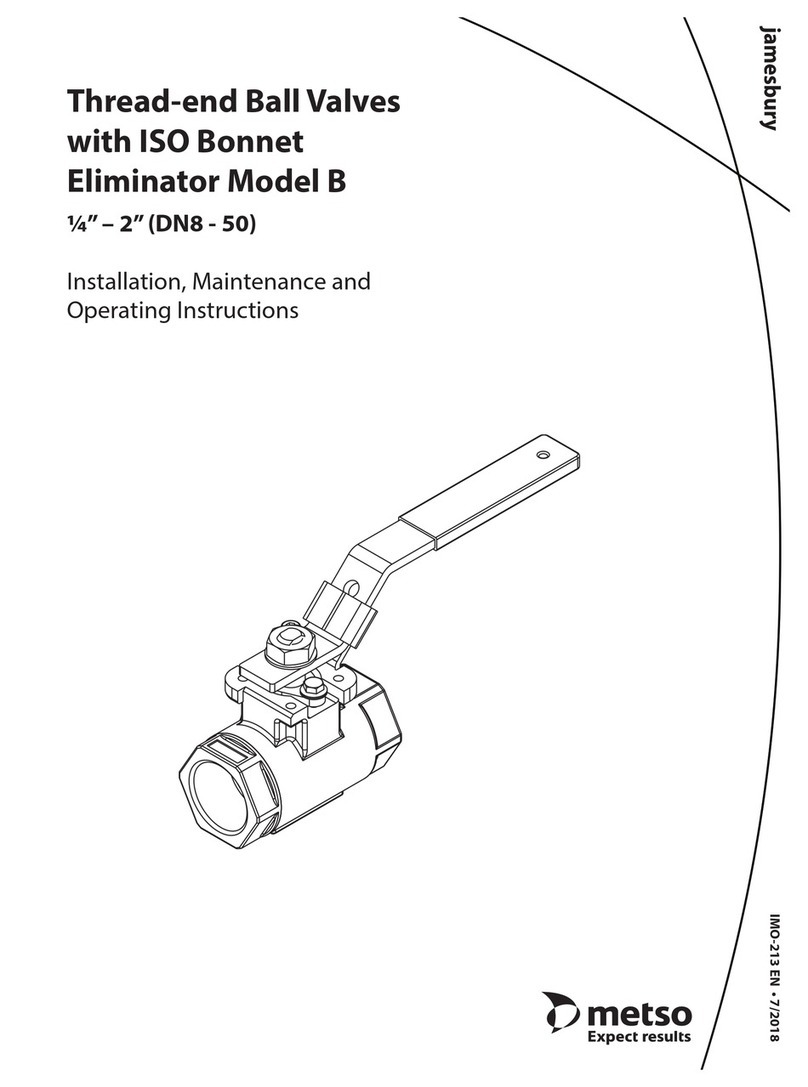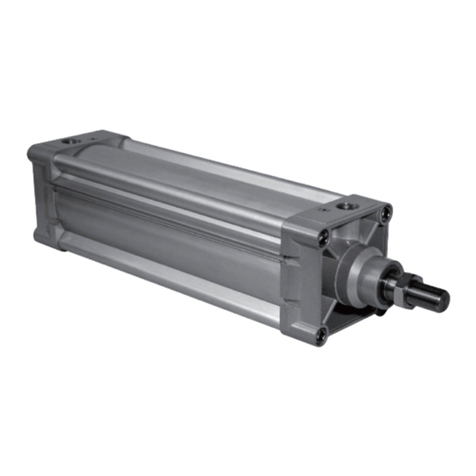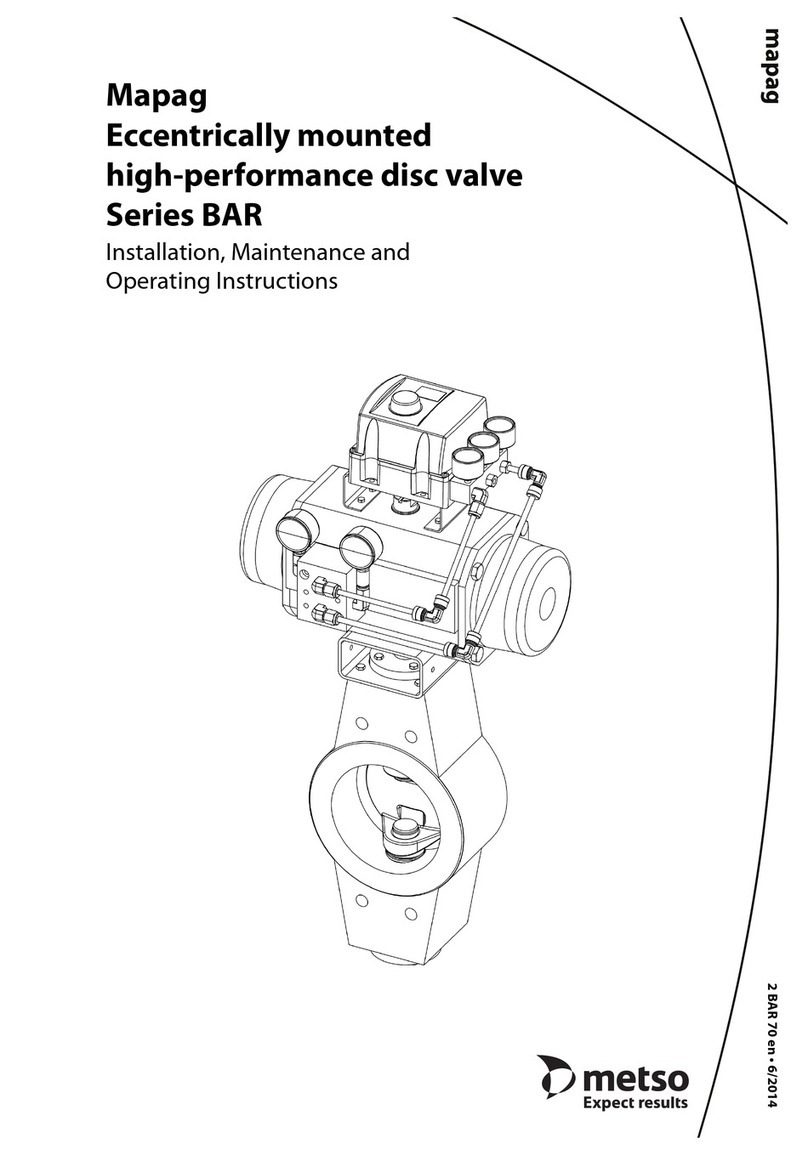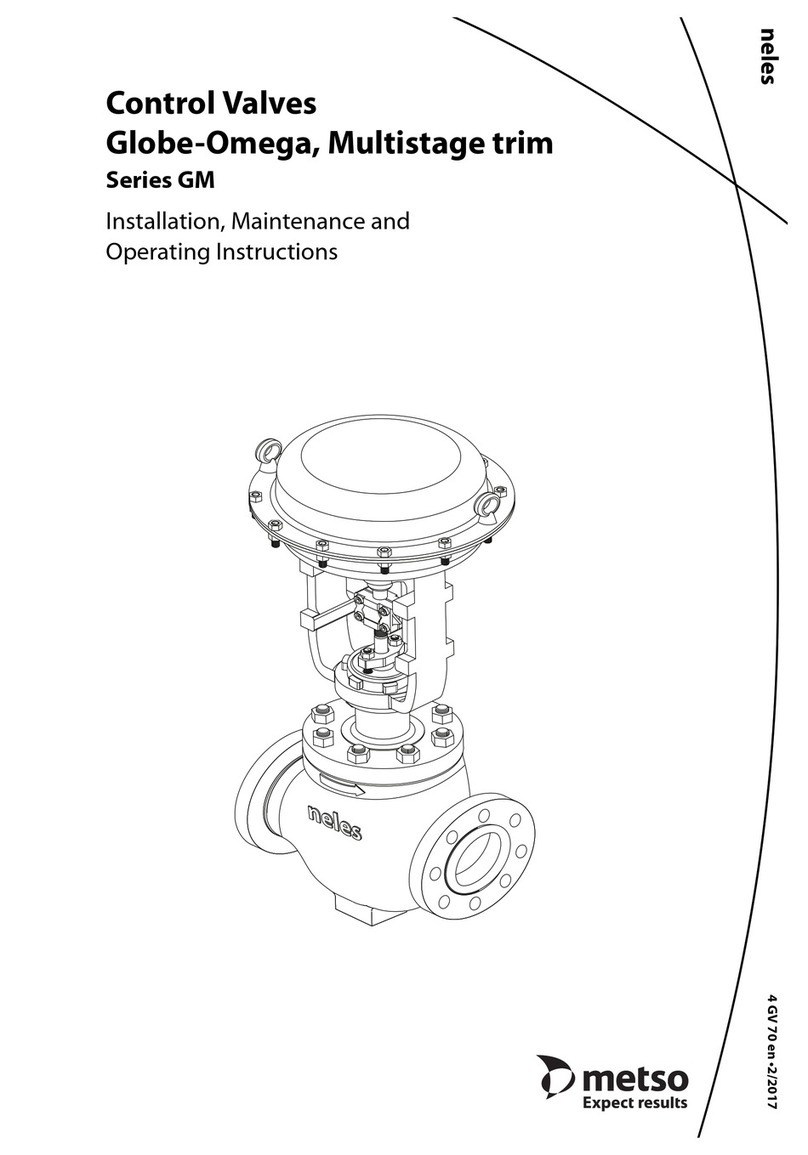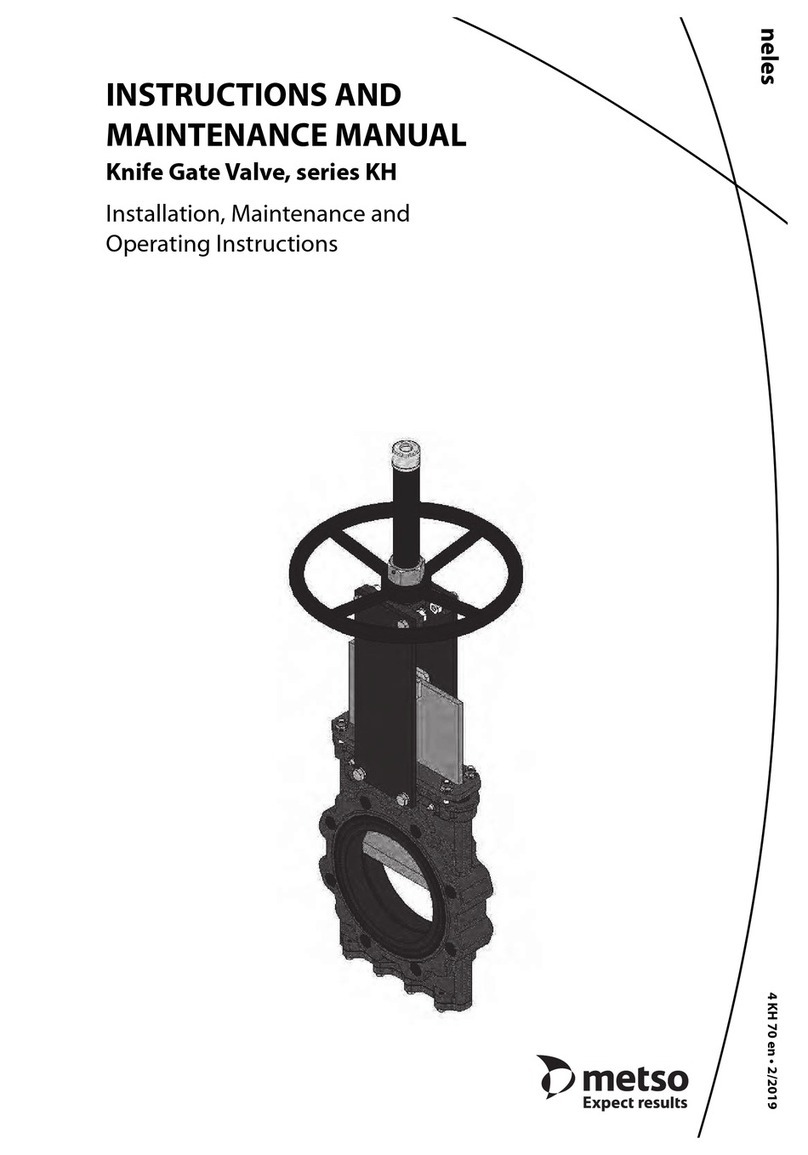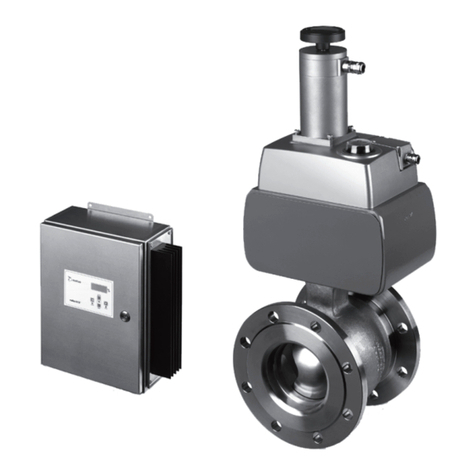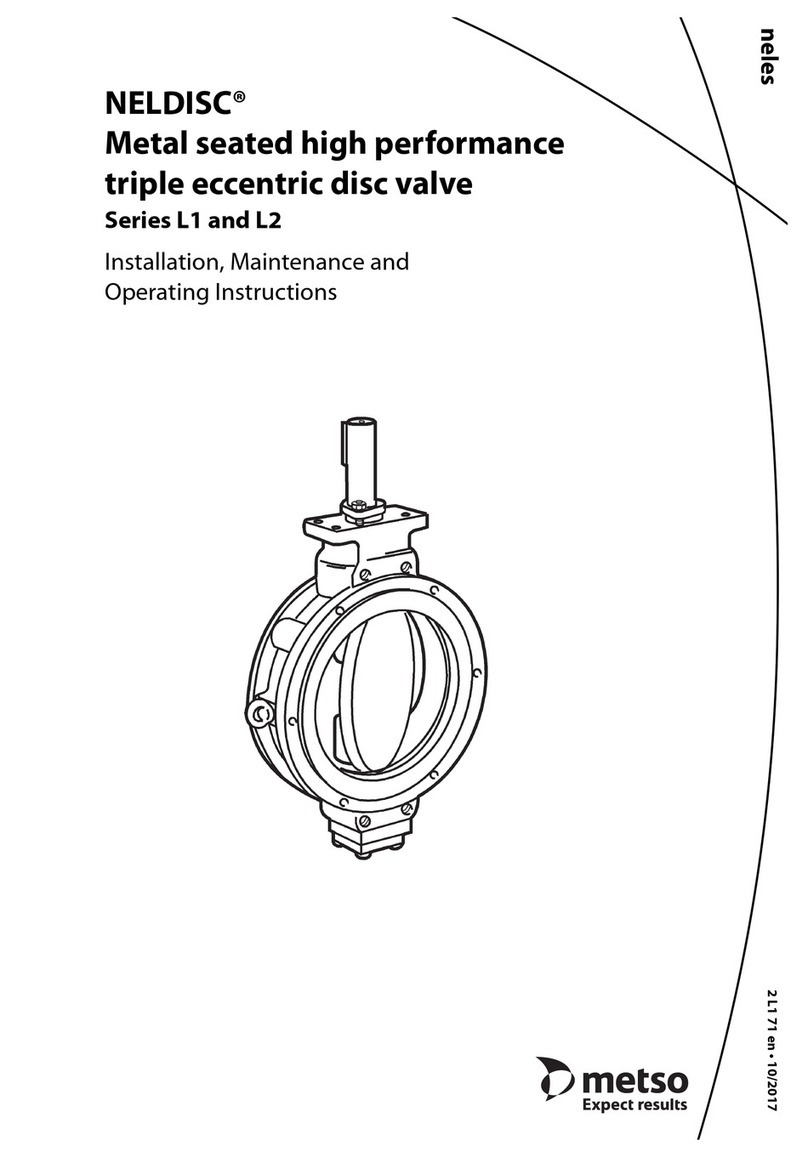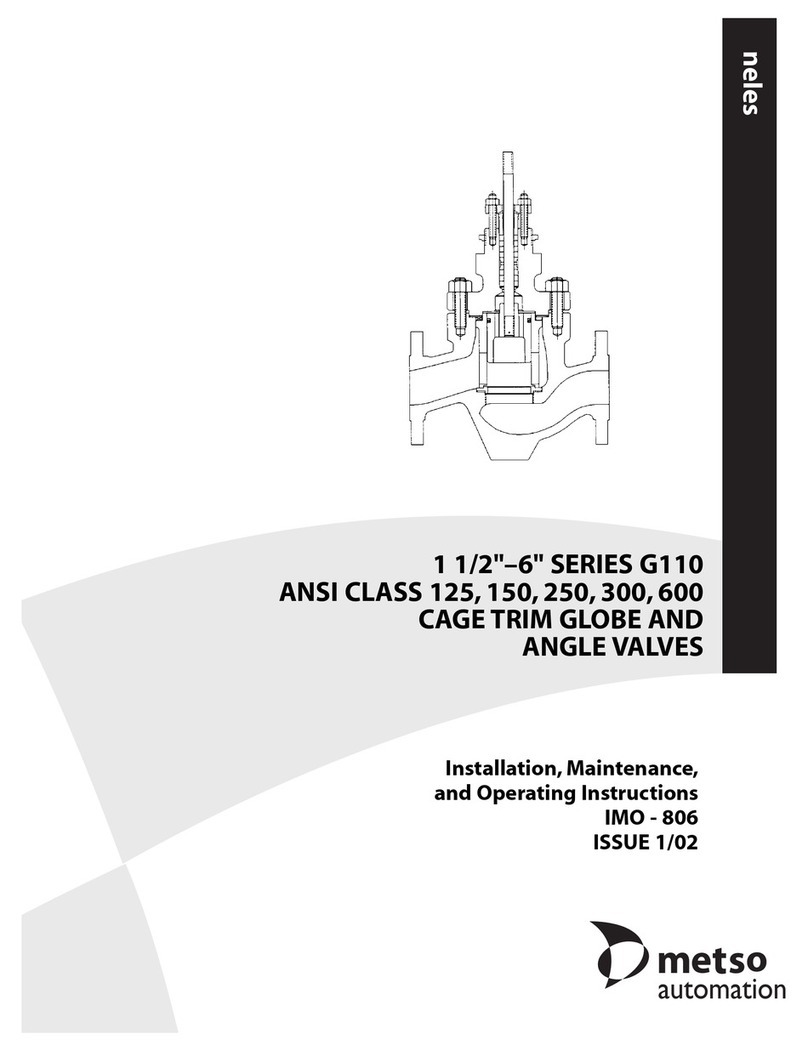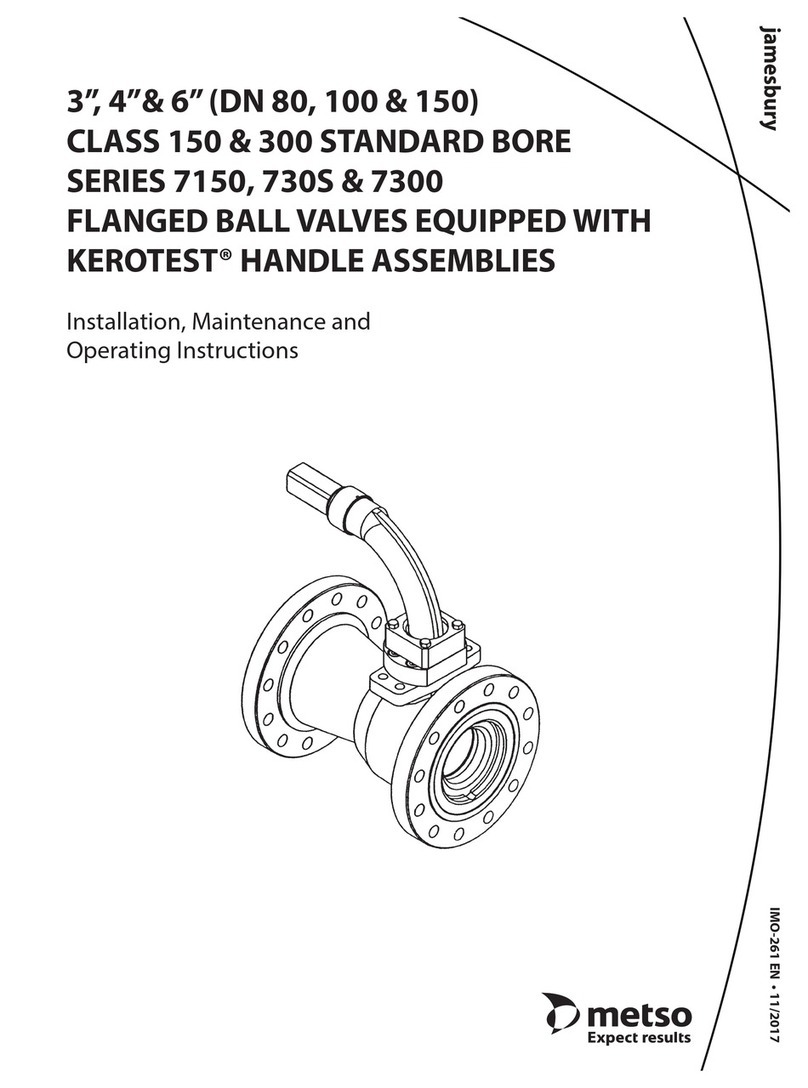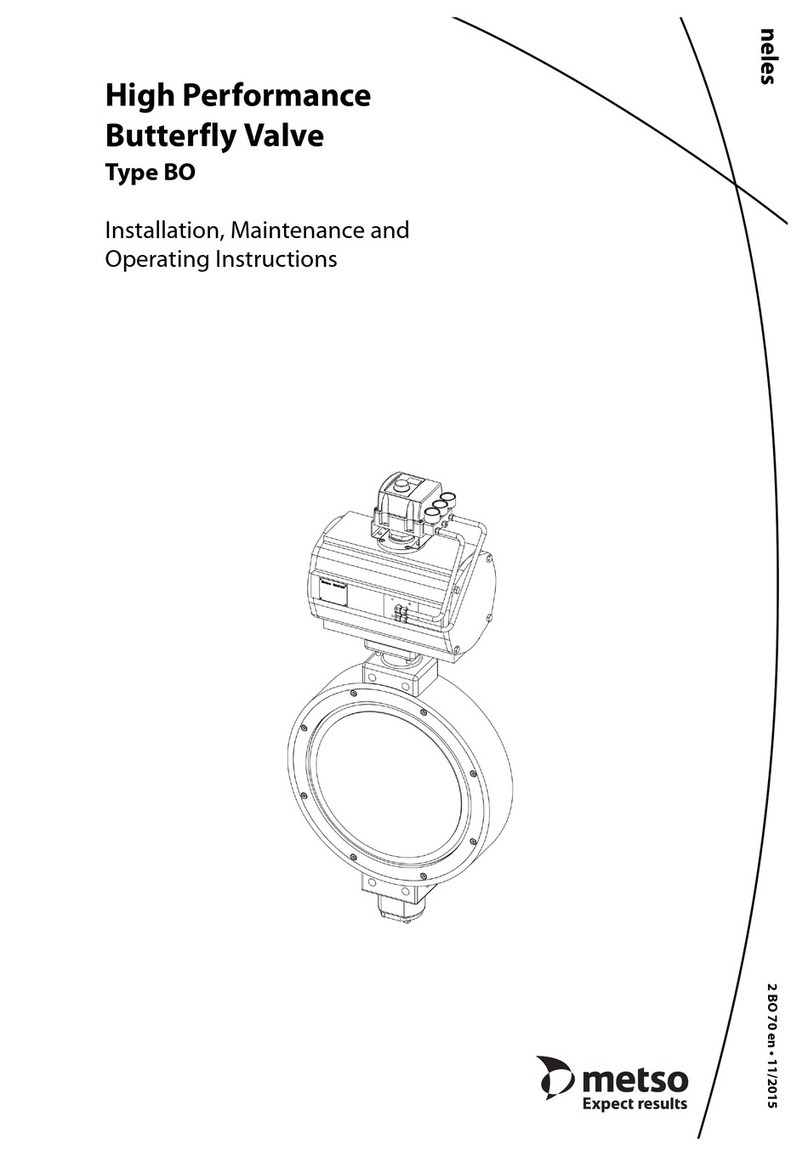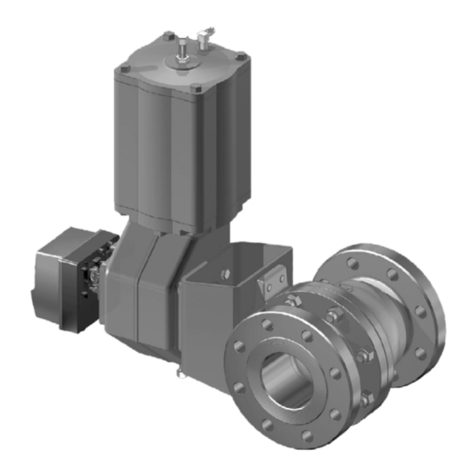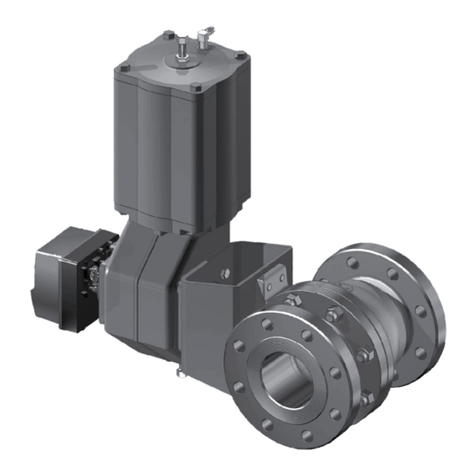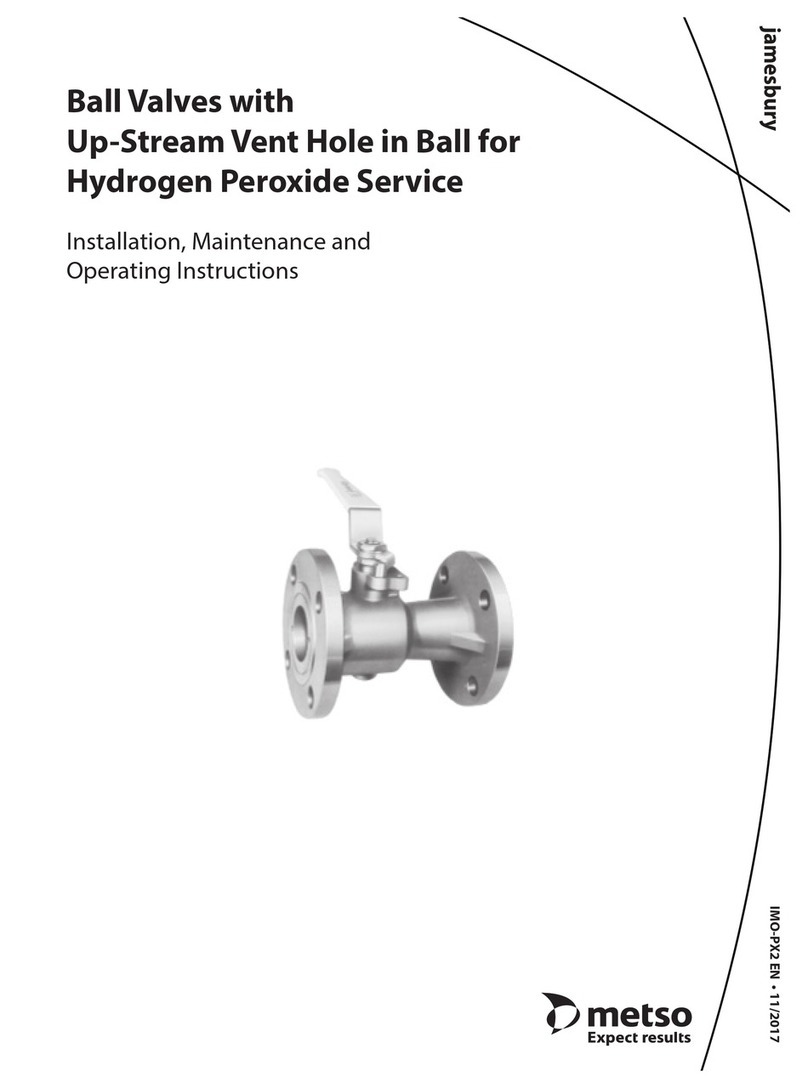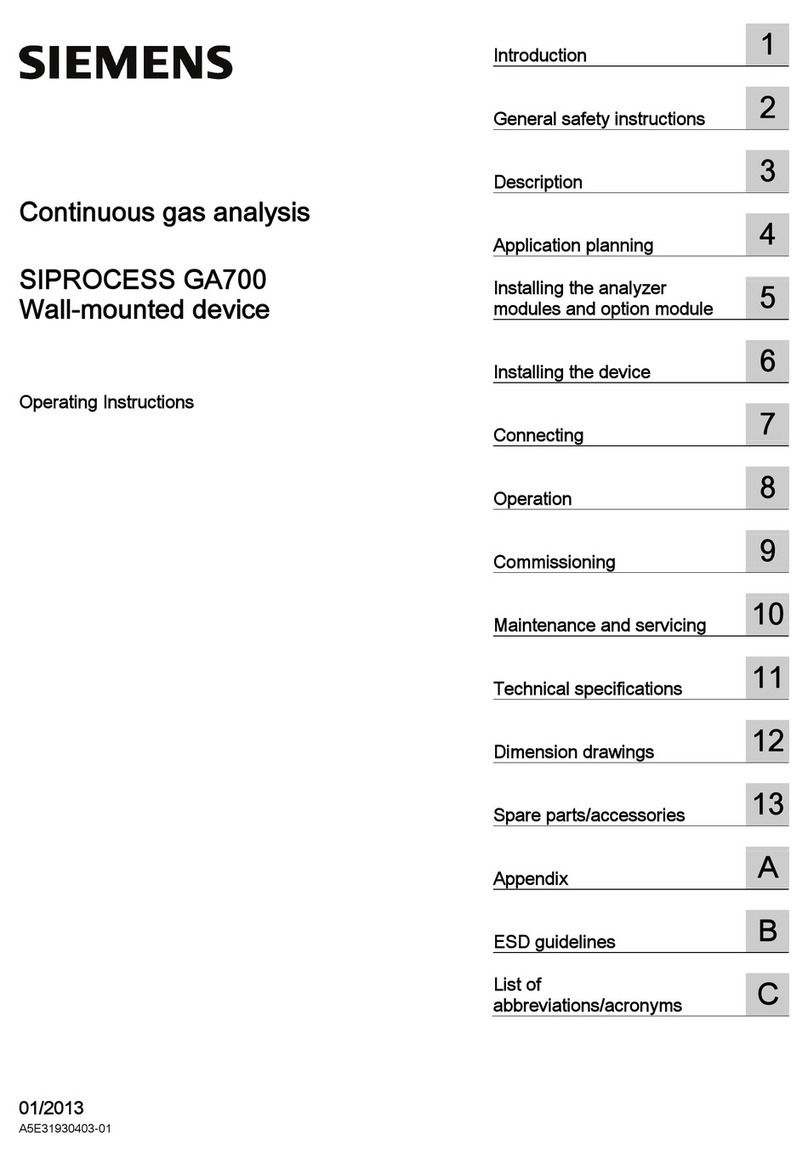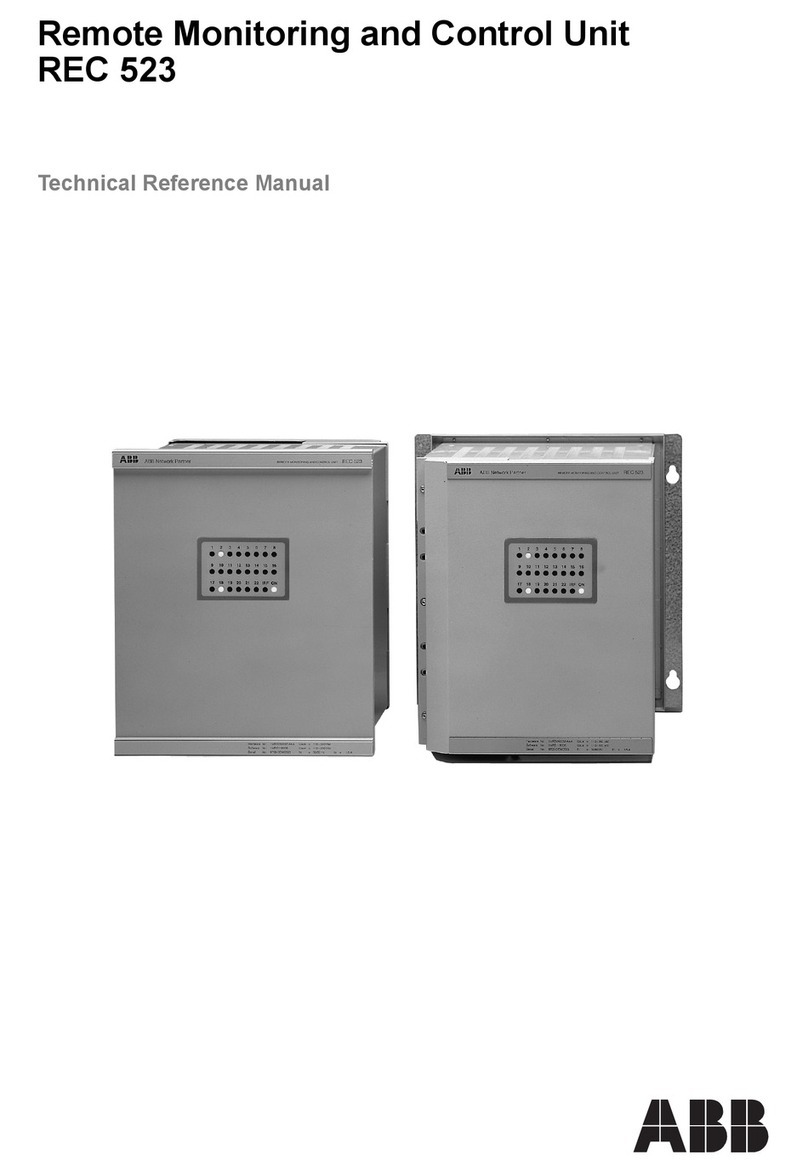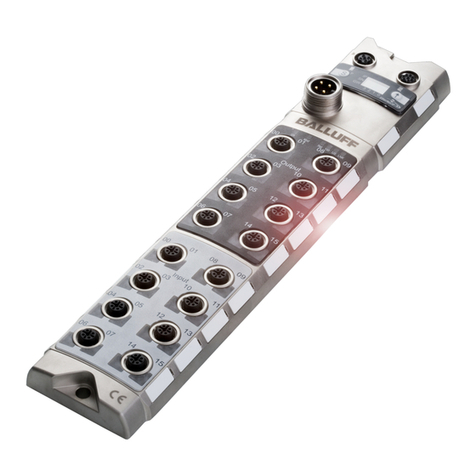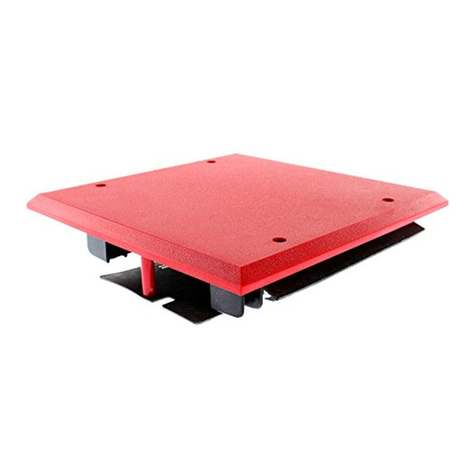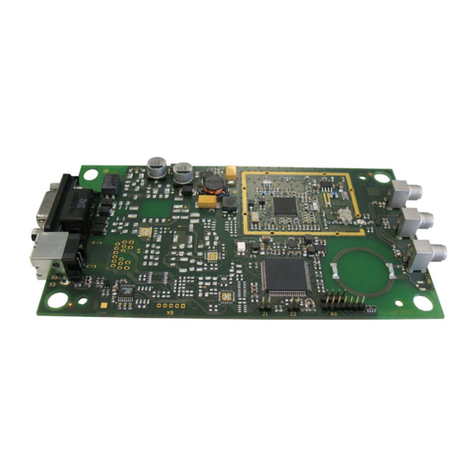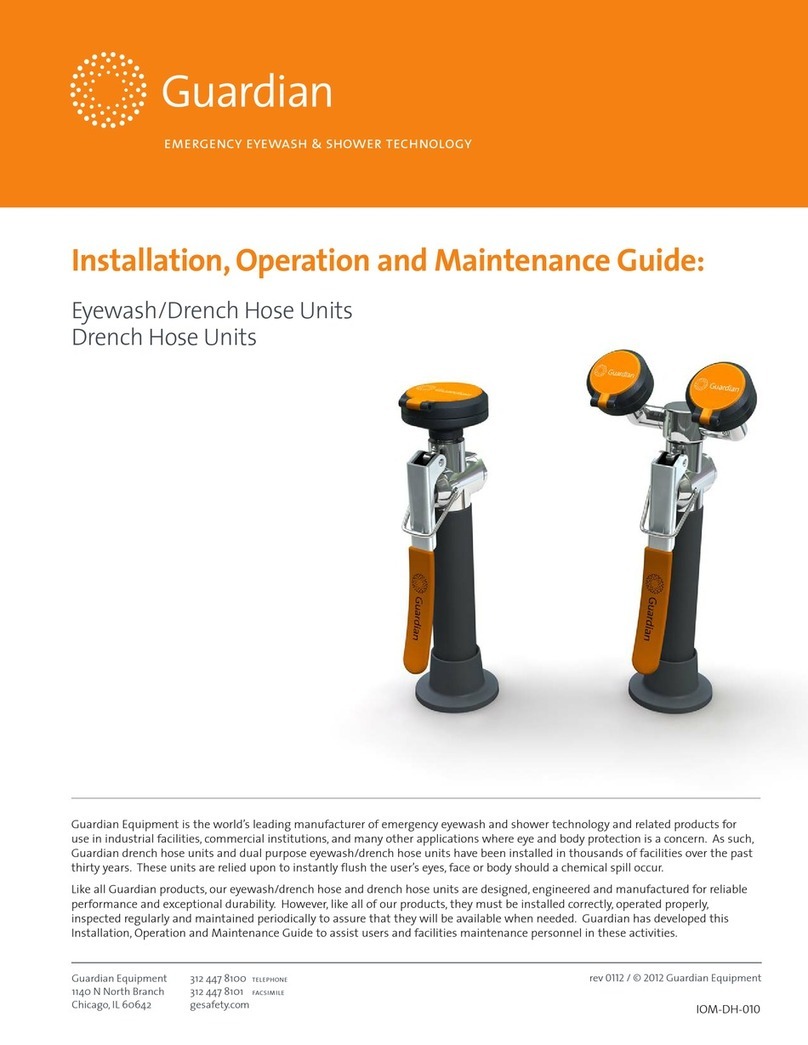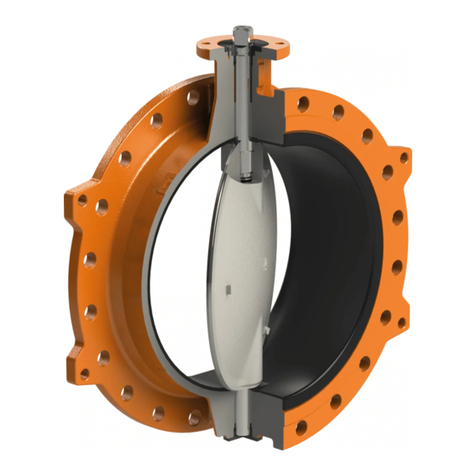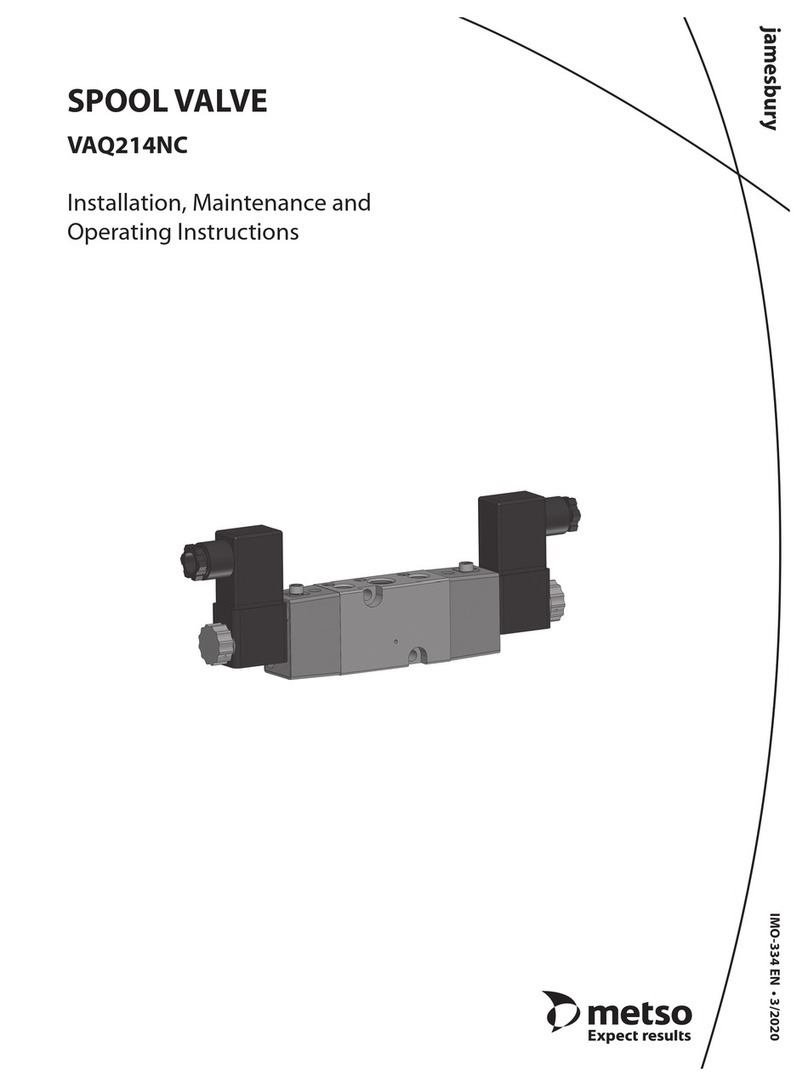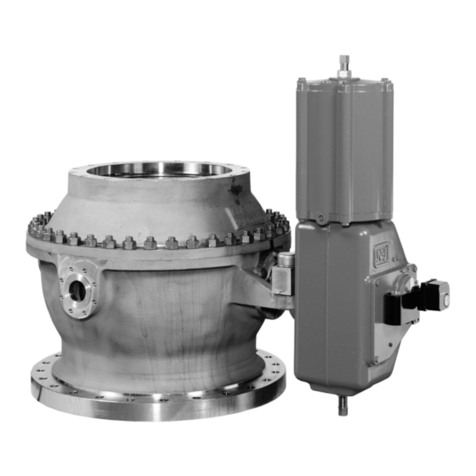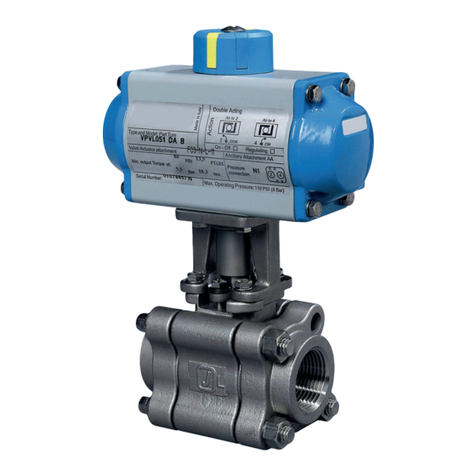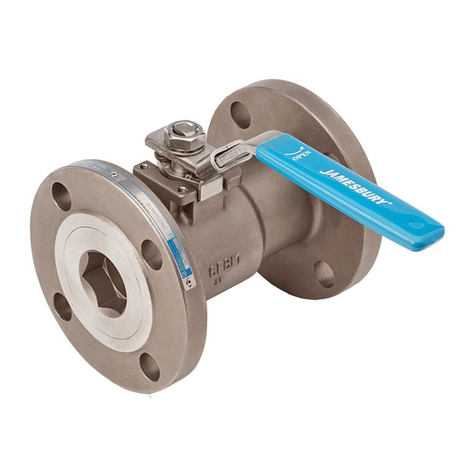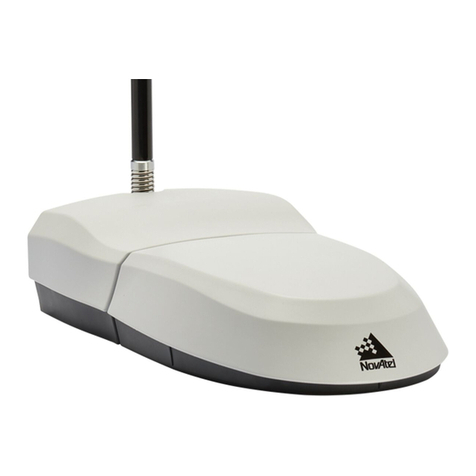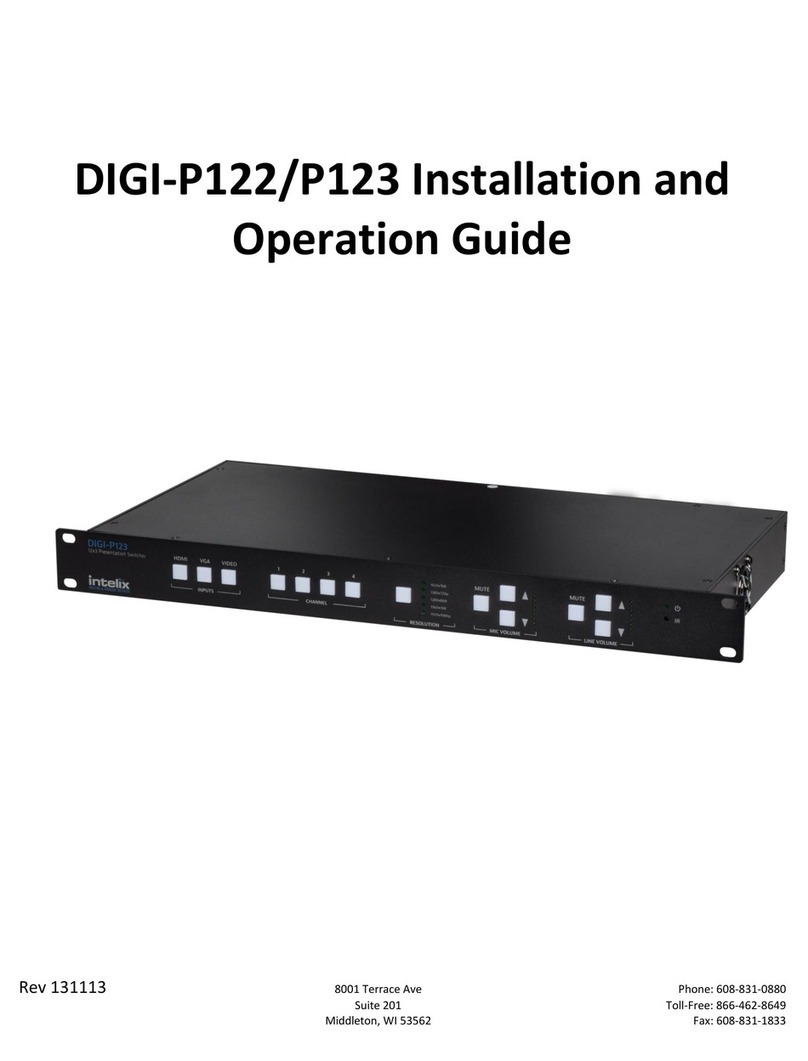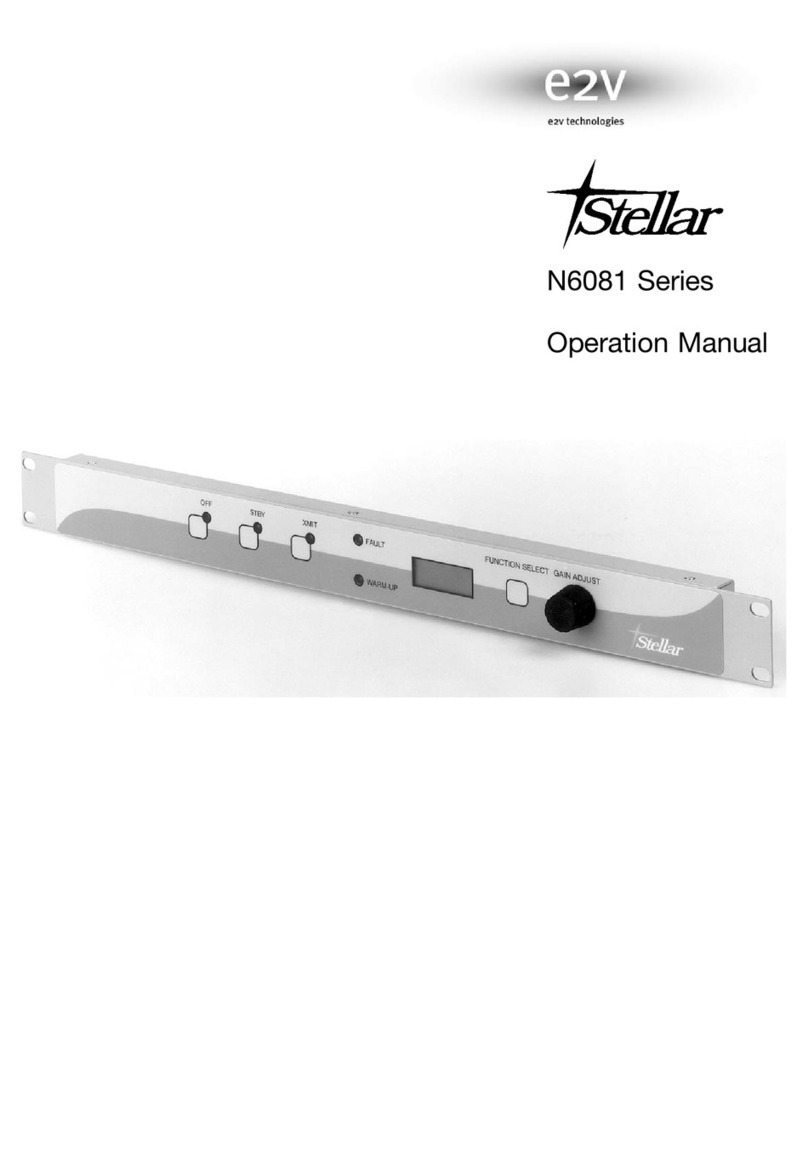
IMO 1/18
IMO-308 EN 11
toward the bonnet, place the disc in the waterway and
slide the shaft through the shaft bore in the disc. Place
the lower thrust bearing (64) below the disc, slide the
shaft through and into the lower shaft bearing (6). Use
caution to prevent damage to the shaft bearings and
disc sealing surface.
8. Insert the disc pins (13), as shown in (Figure 15), and
drive them into place. The pins must be driven so that
both pins are the same depth within 1/16” (1.56 mm).
When they are correctly installed the drive shaft will
be as shown in (Figures 2 and 3). Weld both ends of
the pins, small end rst, grounding the shaft only (body
on blocks of wood). After the disc cools, clean the
welds with a wire brush. CAUTION: Use care to keep
contamination out of the valve.
9. Install the upper bearing spacer (41) when applicable,
the spacer (7) with chamfered side toward disc, the shaft
seal (8), the compression ring (9) and the retainer ring
(47). If the shaft seal is of the PTFE V-ring type, be certain
that it is installed in the orientation shown in (Figure 15).
10. If the studs (14) have been removed from the valve,
reinstall them in the holes shown in (Figure 5), using
LOCTITE® or other locking compound to prevent
vibration loosening. Stud protrusion should be 2” (50.8
mm) for the 3”, 4”, 6” and 8” (DN 80, 100, 150 and 200)
valves and 2-1/4” (57.15 mm) for the 10” and 12” (DN
250 and 300) valves.
11. Install new gasket (54), and secure cover plate to valve
body using screws (55). To ensure even gasket loading
tighten screws, in an alternating sequence to torque in
(Table 3).
12. If the handle ratchet plate has been removed from the
valve, reinstall it in the orientation shown in (Figure
12). Install lock washers and screws in the two bonnet
holes. Do not tighten the screws until the stops are set.
(See SETTING HANDLE STOP Section or ACTUATOR
MOUNTING INSTRUCTIONS Section.)
13. Place the compression plate (10) over the shaft (4) and
studs (14). Install the nuts (15), but do not tighten.
14. Cycle the valve fully closed. Install new unused seat and
body seal. See the SEAT REPLACEMENT Section for
details.
15. With the valve still closed, tighten the nuts (15) on
the compression plate evenly until the shaft seals
are adequately compressed to prevent leakage. This
should require tightening the nuts approximately 1-1/2
to 2 full turns after they have both come into contact
with the compression plate.
16. Set the handle or actuator stops as described in the
SETTING HANDLE STOP Section or ACTUATOR
MOUNTING INSTRUCTIONS Section. Tighten the
screws holding the ratchet plate.
4.10 Testing the Valve
WARNING:
WHEN PRESSURE TESTING, EXERCISE CAUTION AND MAKE SURE
ALL EQUIPMENT USED IS IN GOOD WORKING CONDITION AND
APPROPRIATE FOR THE INTENDED PRESSURE.
Should it become necessary to perform a leak test of the
valve prior to its installation in the pipeline, follow the
procedure outlined below.
1. In the following test, suitable gaskets are required
between the faces of the valve and the test hardware.
2. Before pressurizing the valve be sure all actuator
linkage fasteners are tight, and that the power or
pressure is applied to the actuator to maintain the
valve in the closed position. The oset design on the
valve may cause it to rotate when the test pressure is
applied to one side of the disc.
3. The valve should be installed between anges or
in a testing apparatus. If anges are used, refer to
INSTALLATION Section. If a testing device other than
anges is used, the clamping force of the device must
be comparable with ange bolt loads on the valve.
4. Slightly open the valve. Verify that you do not have a seal
between the seat and the disc. Exercise caution when
cycling a valve in the test apparatus to avoid possible
disc damage from the disc striking the test xture.
5. Cap the downstream vent and apply 100 psi (6.9 bar) to
the valve. Check the shaft seals, and ange gaskets for
leakage. This can be done by applying a liquid mixture
of soap and water at all seal joints and watching for
bubbles.
IMPORTANT: If leakage is detected between the valve and
anges STOP IMMEDIATELY. Mark the area of leakage.
Vent the valve, and when it has returned to 0 psi (0 bar),
retighten the ange bolts in the area. Repressurize the valve
checking the gasket again. If leakage persists, disassemble
and inspect for damage.
6. If leakage is detected at the shaft seals, tighten the
bonnet nuts only enough to stop the leak.
7. Vent the valve, and when it has returned to 0 psi (0 bar),
cycle the valve closed.
8. Attach a small tube or hose to the downstream ange
(shaft side of the valve).
9. Be sure power/pressure is still applied to the actuator.
Pressurize the upstream ange (insert side of valve) to
100 psi (6.9 bar). Check for leakage passing through the
free end of the tube/hose.
10. If leakage is detected, vent the valve and make an
actuator close-stop adjustment as described in the
appropriate Jamesbury actuator IMO, listed in Table 4.




















